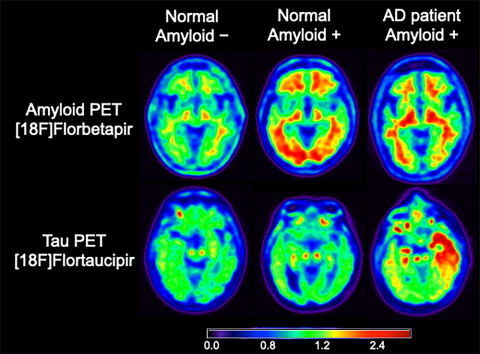Overview
Tau neurofibrillary tangle accumulation is another key neuropathological feature of Alzheimer’s disease, besides brain beta-amyloid plaques. Tau pathology accumulates in parts of the brain different from those where amyloid plaques form in the early stage of Alzheimer’s disease and has been linked closer to cognitive changes. Tracking longitudinal tau accumulation in living people, thus, is crucial for a better understanding of the natural history of tau pathology, monitoring cognitive changes and disease progression, and testing drug effects on tau accumulation in clinical trials. Several tau PET tracers have been developed in recent years, but these tau PET tracers have distinct affinity to tau tangles and present different characteristic signals.
Professor Hwamee Oh and her lab are part of a multi-center longitudinal project, funded by the National Institutes of Health, that aims to examine different characteristics associated with tau PET tracers and to improve generalization of findings obtained in studies and clinical practice using distinct tau tracers. The study will recruit 620 healthy young, cognitively normal older adults and patients with Alzheimer’s disease who will undergo amyloid and tau PET scans, along with MRI scans, at two time points. These imaging markers will be related to a set of cognitive measurements. The study findings will shed light on the aforementioned issues, evaluating similarities and differences of the tau imaging agents towards the harmonization of cross-sectional and longitudinal tau PET results and their impact on cognition along the spectrum of Alzheimer’s disease.
